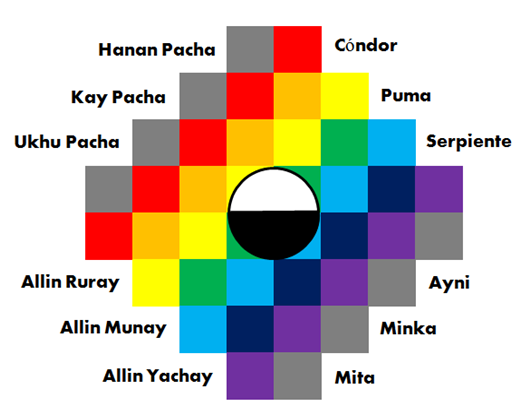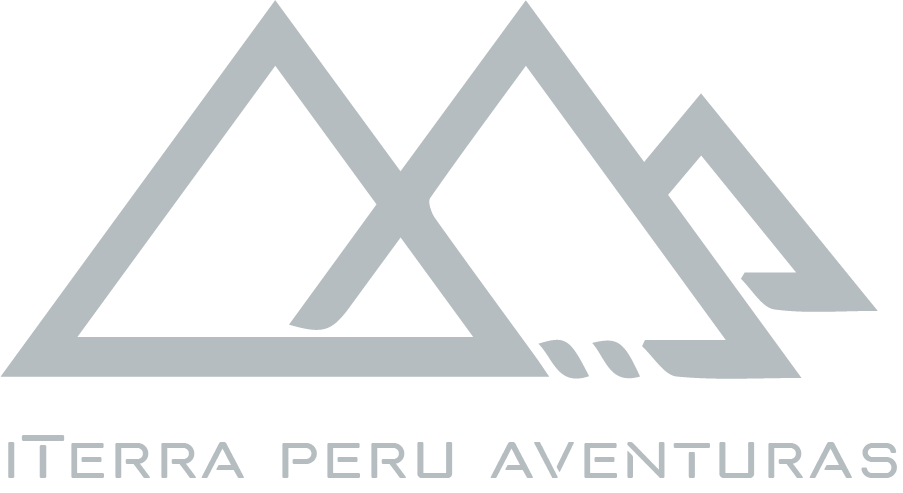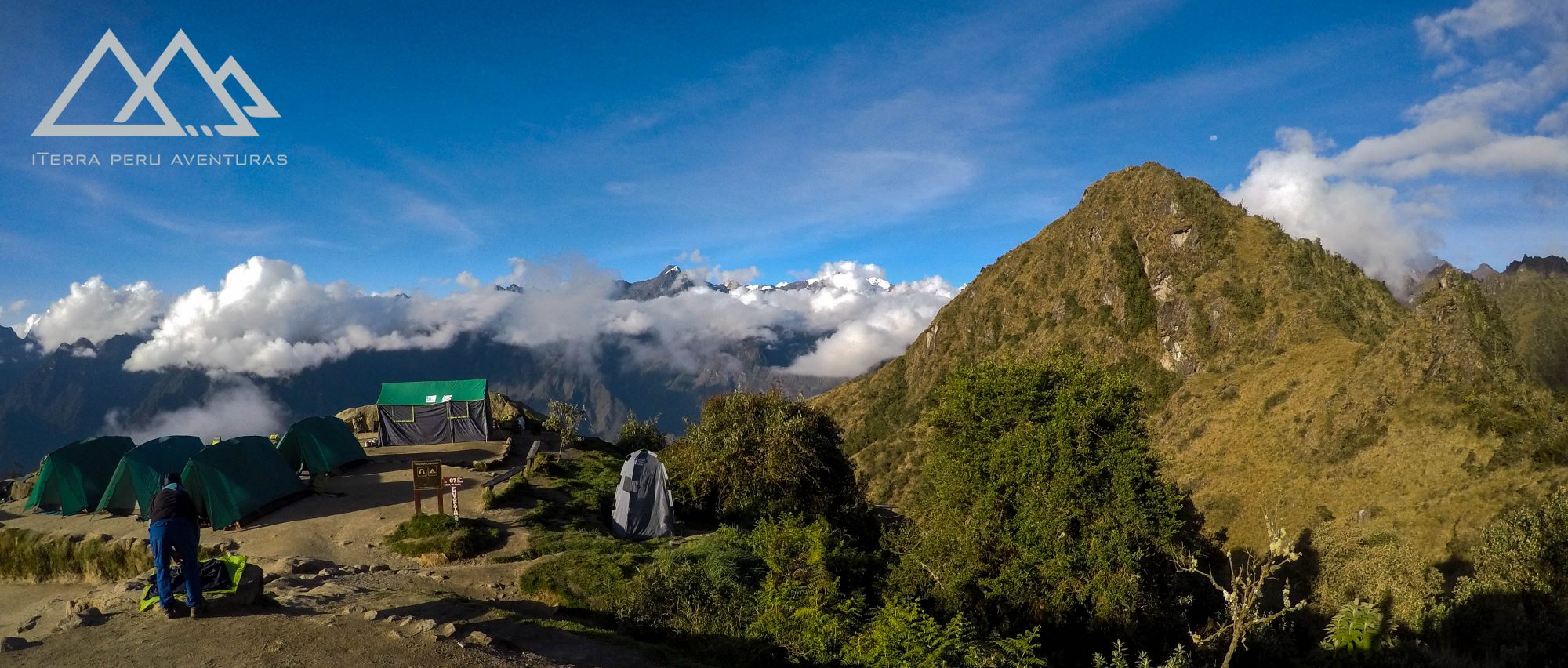
The «chacana» or Andean cross is a recurrent symbol in the original cultures of the Andes. Its shape is that of a square and stepped cross, with twelve points.
The symbol itself represents the southern cross in May and is a reference to the Sun and the Southern Cross, although its shape, which suggests a pyramid with stairs on all four sides and circular center, would also have a higher meaning, in the sense of pointing out the union between the low and the high, the earth and the sun, the human being and the superior. Chakana, then, is understood not only as an architectural or geometric concept, but takes the meaning of «ladder to the highest».
Chacanas have been found in various works of architecture, petroglyphs, textiles, ceramics and sculptures throughout the South American highlands, registering for the first time in the Caral culture, the mother civilization of America, then in Seshin Bajo and later in the Aymara constructions of Tiahuanaco , in the altiplano of Bolivia, where astronomical observatories were also built exclusively for the observation of the southern cross, since the entire culture depended on the movement and position of the constellation to chronogram its annual activities. They are also observed in Paracas, in the department of Ica, in Chavín in northern Peru. Chakanas have also been found in Ecuador, Argentina and Chile, since they were part of the Inca Empire.
In fact, a Temple of the Late Archaic in the Peruvian north, in the Archaeological Complex of Ventarrón, district of Pomalca, in Lambayeque has the oldest chacana form found until today. The temple has an antiquity not yet exactly determined, but that would be between 4000 to 5000 years.
In fact, the chakana is not a form found at random, but rather it is a geometrical form resulting from astronomical observation. The ancient men «brought heaven to earth» and represented it with this symbol that contains opposing components that explain a vision of the universe, being thus represented the masculine and the feminine, the sky and the earth, the above and the below , energy and matter, time and space. The shape of the chakana encloses in its geometry the concept of Number Pi and the real number twenty-seven [citation needed].
Many of the typical forms used by Andean craftsmen enclose the geometric relations marked by chacana.
The choice of the number of theirs (‘region’ in Quechua) or Qollasuyos (‘region’ in Aymara) or regions of the Empire, as well as the dual definition of Hanan and Hurin (for example in Hanan Cuzco and Hurin Cuzco) would also be based in the astronomical observations symbolized in the chacana, these calculations were also used as a basis for architectural and road design.
The Qhapaq Ñan, Camino del Inca or Camino del Señor, the central axis of the road system of the Inca Empire, is also consistent with the chacana geometry. This road marks a line that crosses various cities of the Inca empire such as Cajamarca, Cuzco, Tiahuanaco, Oruro and Potosí (these last two are colonial cities, with previous Quechua and Aymara settlements). This line can be calculated taking as center the city of Cuzco, navel of the world, according to the Inca conception.
The chacana also indicates the four seasons of the year and the sowing and harvesting times. Some Andean peoples celebrate May 3 as the day of the chacana, because on this day, the Southern Cross assumes the astronomical form of a perfect cross and is a sign of harvest time. The southern cross was venerated by ancient inhabitants of Peru and, until today, the tradition of protecting the crops is maintained by marking the cultivated area with various Chakanas. This symbol has nothing to do with the Christian cross.
It is also the inkarri symbol.
Andean worldview
Worldview is the conception and image of the world that people have. Through this vision of the universe that surrounds them, the peoples (especially those of antiquity) perceived and interpreted their natural and cultural environment.
The worldview is based on the cosmogony, which is the mythological phase of the explanation of the world, and is organized in cosmology, as the basis of the syntax of thought. Different cultures of antiquity such as Egyptian, Inca, etc. They achieved an integrated vision of their environment that was used for the benefit of their own people. Astrological archeology is an important means to understand the worldview of ancient peoples.
In the Andean world, the worldview is mainly linked to the cosmography, which is the description of the cosmos, in this case corresponding to the southern hemisphere sky, whose visual and symbolic axis is marked by the constellation of the Southern Cross, called Chakana in the antiquity, and whose name is applied to the Andean Stepped Cross, symbol of the Computer or Viracocha.
In the Andean universe there are simultaneous, parallel and interconnected worlds, in which life and communication between natural and spiritual entities are recognized.

